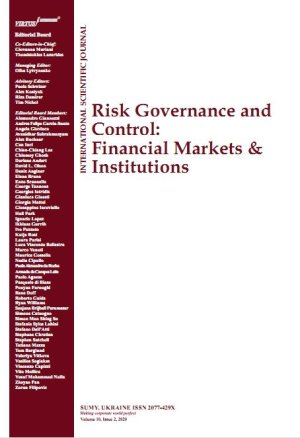
BANKS’ INTERNAL CONTROLS AND RISK MANAGEMENT: VALUE-ADDED FUNCTIONS IN ITALIAN CREDIT COOPERATIVE BANKS
Download This ArticleAbstract
A critical component of safe and sound bank management is constituted by an effective and efficient system of internal controls, which help to ensure that the goals and objectives of a bank will be met, that long-term profitability targets will be achieved, and maintain reliable financial and managerial reporting. Such a system can also ensure that the bank will comply with laws and regulations as well as policies, plans, internal rules and procedures, and decrease the risk of unexpected losses or damage to the bank’s reputation.
The paper describes the essential elements of a sound internal control system and through a qualitative approach, it shows how is tied to the rules attaining capital requirements and, above all, to the purpose of the Internal Capital Adequacy Assessment Process (ICAAP) which aims at determining the adequate capitalisation of a bank given the risks endured as well as future risks arising from growth, and new business lines. After the recent financial crisis ICAAP is becoming more and more relevant and a central component of an effective strategy for managing risk and creating value. All principles and considerations are referred to Italian Credit Cooperative Banks particular both for dimension and for governance and risk management. They have been contacted though local federations and the results confirm the existing of weakness in internal controls.
Keywords: internal control system, risk management, risk appetite, Pillar II, ICAAP
How to cite this paper: Cerrone, R. (2013). Banks’ internal controls and risk management: Value-added functions in Italian credit cooperative banks. Risk governance & control: Financial markets & institutions, 3(4), 16-27. https://doi.org/10.22495/rgcv3i4art2



















